Realty Forum 2018 will bring together industry professionals and consultants alike to find out their take on how the market is evolving and their forecast on the segments promising the highest profits in 2018 and beyond that.s
Here are the main statements of the panelists:
Panel 1 – Opening Session – Major new investment projects on the local real estate market
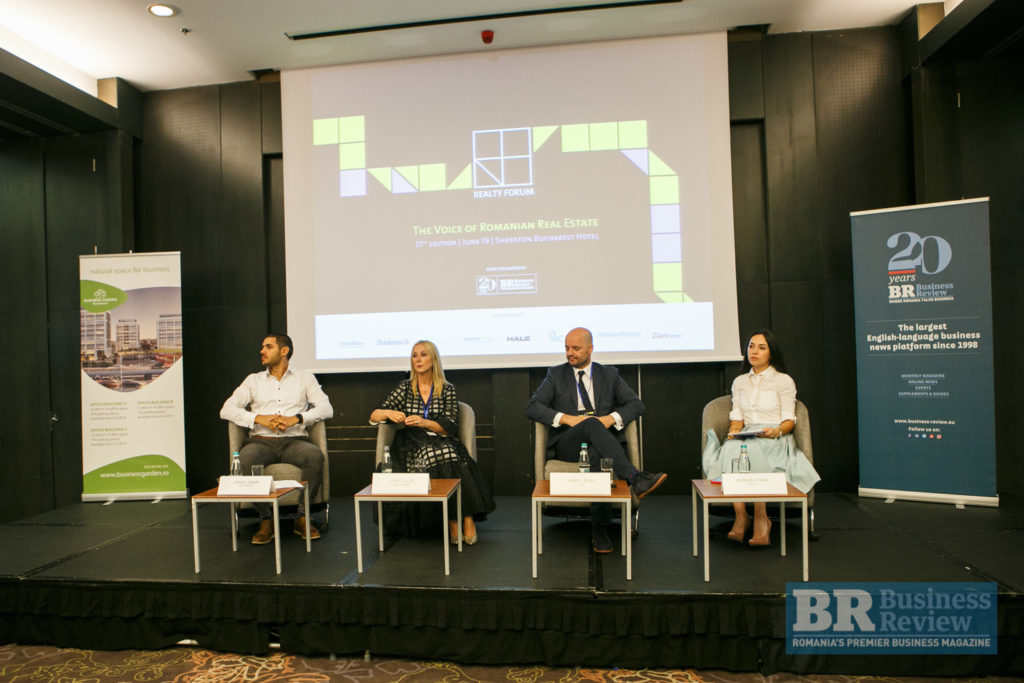
Lorin Collin, senior advisor, Lion’s Head:
- We’ve seen about three large transactions in one week
- Transactions do take place in 8 months to a year
- It takes a long time to understand the market, some people come here with zero expectations and that’s the best approach because you won’t be disappointed, and until now for the most part people are pleasantly surprised by our market
- Would you buy an office project between Unirii and Asmita Gardens?
- Tomorrow! Decentralized locations are quite interesting – but why are we scared of Unirii when it’s the most populated area with multiple transportation options? I’m not buying a neighbourhood, I’m buying an asset – population will not decline. The problem is we don’t have so many assets, we should send the message that we need new office projects as soon as possible.
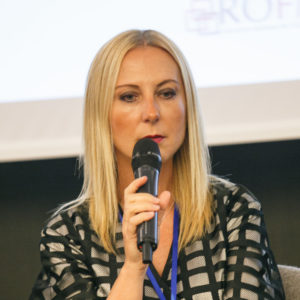
- We emphasize the quality of the assets. Secondly, we are interested in the quality of the tenants. It’s a team effort to build, rent and buy, without multinationals or local occupiers with predictability in business, it will be empty. Nevertheless, it’s how you maintain those assets over a longer period of time – tenants’ comfort, business needs, facilities they need
- Many developers are just interested in the building being clean, having someone in the reception, etc – but those days are gone – you should keep a continuous communication with tenants and know their preferences and habits – what coffee they drink, whether they have electric cars and so on. We need to make sure tenants are satisfied and that their needs are met throughout the lease.
- Our business model is to acquire income-generating assets in the office market, of premium quality, and we will continue to grow to become a major player – but our task is extremely difficult, miracles don’t happen overnight – of course we’re looking at developments because it’s better to talk to people who already have a project. They key to success for an investor is to maintain a pipeline at a healthy stage because if it goes dry you’ll lose money. The wheel needs to spin at a sustainable speed – not too slow, not too fast – currently in Romania the climate is great.
- We’re all new on the market but don’t kid yourselves that we don’t know what we’re doing, because we’ve done our homework
- We are probably one of the most sophisticated and ambitious investment funds in the region.
Daniel Tudor, advisor, London Partners | CEO & founder, THE CONCEPT Real Estate Advisers:
- In Romania, I don’t know how you could close a deal in 6-8 weeks because it usually takes years
- LP’s first project is a EUR 26 million investment, delivered at the beginning of next year
- Our experience on the investment market sets a couple of KPIs investors are looking for
- In most cases, investors will ask for at least 20 percent return on cost – hard to obtain, especially on a market that is not very stable
- 2-3 years minimum to deliver a project – they expect between 12 and 16 percent
- Costs are currently growing for construction and the market is going to be even more competitive
- Why Unirii?
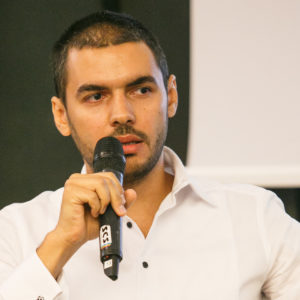 Unirii is first of all a historical area, it has many advantages being at the center of Bucharest; it’s very good for short-term renting, which many investors are looking for
Unirii is first of all a historical area, it has many advantages being at the center of Bucharest; it’s very good for short-term renting, which many investors are looking for- There’s going to be a big hub between Vastint at Timpuri Noi and Unirii
- What should we expect next from London Partners?
- A huge opportunity for upper-medium type of projects – first in terms of clients, but also in terms of the quality of the projects. We want to be no.1 in this segment and I believe that Romanian people, especially in Bucharest, are keen to pay more for better comfort in life and for using their time well – we focus on areas with quick access to central areas and good transport links – this is going to be a big trend in the upcoming years – people are willing to pay for better facilities, comfort.
- Our main aim is to create communities of people who really relate to each other, not just on Facebook, in every one of our projects.
- Max 10-15 percent of the total people buying in residential compounds don’t actually live there – so 85 percent of the people who buy from us will actually live there so there’s a huge opportunity of connecting them to each other and creating a community
Karol Skiba, investment director, CVI:
- We are new to the Romanian market
- In Poland, where we are the most active, we average about 6 weeks for a transaction – this makes us different from the banking sector because we act quickly
- In Romania, it was indeed a more lengthy process and it’s not going to be shorter than 8-10 weeks
- Our approach to investment is much more rigorous and we really analyse whether a project is worth the effort or not
- We hope that we will achieve shorter times for transactions in Romania
- We provide debt for both the commercial and residential sector
- The most important thing is whether the project makes sense in terms of the comparison to other deal we are familiar with – if it doesn’t, we don’t go forward
- The most crucial thing we need to examine is the sustainability of the rental income because it’s used to serve the debt and it’s used to determine the value of the asset
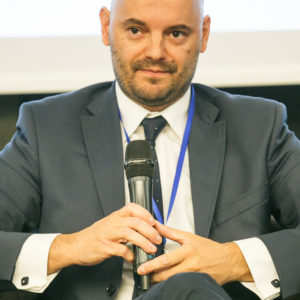
- We don’t have a preference over whether it’s central or not or CBD, we just need to make sure there’s not going to be a major change in the net operating income and generally the exit value is just enough to repay the debt
- Especially for major tenants, we look at sustainability.
- We don’t have a preferred product, we analyse project by project – last year, we looked at about a thousand projects all over the region, and we made 108 deals – about two per week – EUR 600 million
- We have a lot of money to invest and the equity that needs to be deployed rather quickly
- It’s surprising to hear that someone can close a deal in 6 weeks, but this is our average in Poland and it’s doable for us
- Here we are in a learning curve, we’ve made two deals and want to do more, we think that in the future the time frame for a deal will be shorter in Romania – we are open to any kind of opportunity, both residential and commercial
Panel 2 – How the internal migration of Romanian specialists shapes new real estate trends
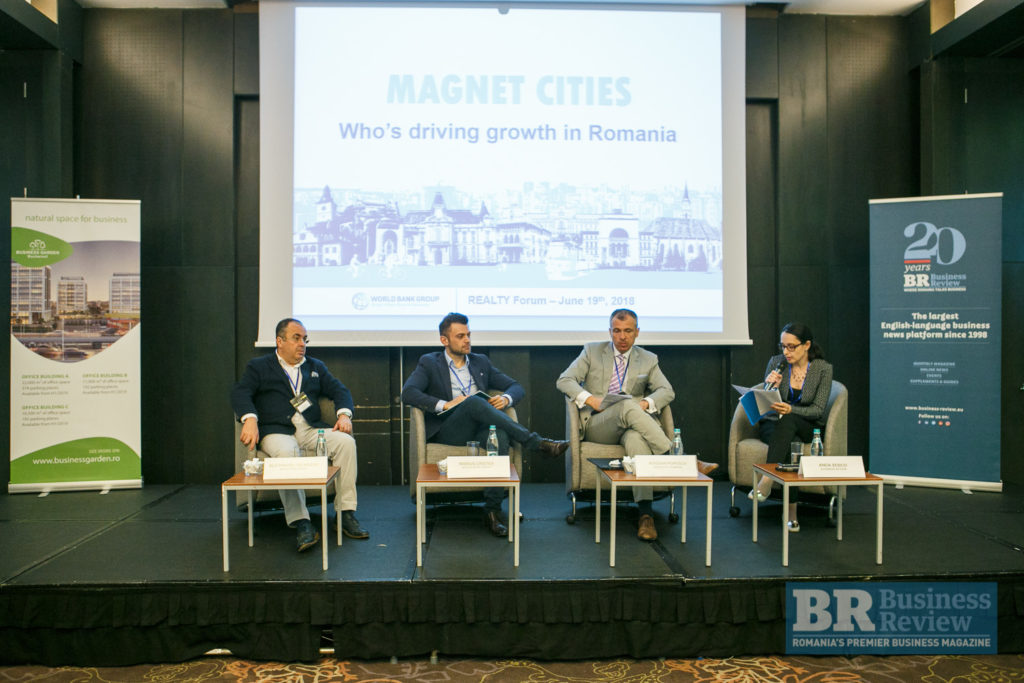
Figures from INS show that in 2016, almost 390,000 people have moved from one Romanian city to another, the largest internal migration since 1991
2016 is the second year in a row when fewer people moved to Bucharest than moved away from Bucharest.
Marius Cristea, Senior Urban Development Specialist, World Bank Group
- What are magnet cities, what makes them attractive?
- The study aims to demystify Romania’s development
- Our departure point is the fact that in the EU,28 primary cities and 228 secondary cities generate 63 percent of the total GDP, and are responsible for 64 percent GDP growth between 2000 and 2013. These cities are the EU’s growth engines.
- In the EU, primate cities of new member states now compete head-to-head with primate cities of old member states.
- Bucharest is already in the same league as other European capitals, at least in terms of GDP per capita
- You can’t see that on the streets, because there’s a deepening between the dynamic of the private sector, already aligned with Europe, and the way the public sector has responded to this economic development – it’s far behind, and at the same time civil society is becoming much more active.
- Meanwhile, Romania’s secondary cities don’t perform as well as secondary cities in other countries in Europe – Cluj can’t compare to cities like Milan and Barcelona.
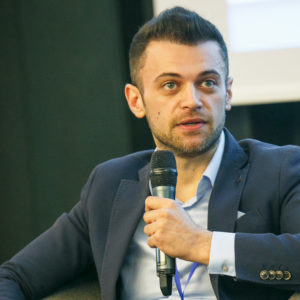 Another very important thing – everywhere in the world, the economic dynamic of a country is determined by the dynamic of secondary cities
Another very important thing – everywhere in the world, the economic dynamic of a country is determined by the dynamic of secondary cities- Our vision on global economic development – trickle down – in first place is the capital, followed by the largest secondary cities, which grow naturally and where the administration doesn’t have a very big role – on levels 3 and 4, the role of local administration is crucial in attracting investments – for example Oradea has a very proactive administration; however cities like Galati or Braila are very much behind
- The first step in the development of a country is the access to large enough markets. The larger the markets, the better the development outcomes. The largest city is usually the first beneficiary of the capital infusion from large markets, followed by the largest secondary cities and so on. the smaller the cities, the bigger the need for intervention to encourage growth and development.
- The main Romanian cities grow faster than Singapore in its hayday. Singapore grew at a compound annual growth rate of 7.25 percent between 1964 and 1980. Romanian cities have registered growth rates of 8-12 percent between 2000 and 2015.
- University centers in Romania are the champions of productivity – an agglomeration that is attractive for investors, who pay larger salaries and lead to a more dynamic economy.
- Cities that don’t attract talent have a harder time of activating economic growth.
- In Romania, the most developed counties are those that are most urbanized.
- This is well-known throughout the world: developed areas are urbanized areas.
- Since 2000, Romania’s rural areas have developed as expected, and as it happened in other countries: the fastest developing localities are those surrounding dynamic cities.
- We looked at development – economic and human – in rural areas. First of all, every area in Romania was doing better in 2011 than in 2002. Development is from west to east due to access to western markets, except the Bucharest area.
- The only chance for areas that are now exclusively agricultural is to be better connected to urban centers, otherwise they won’t be able to develop much further.
- The capacity to attract and keep people is one of the strongest indicators of a city’s competitiveness, indicating that the city has enough attractors – excluding Bucharest, Timisoara is in the first place, then Cluj, Iasi, Constanta – first of all because they are university centers – talent and human resource brings development.
- Survey on preferred migration destination:
- Only 33 percent said they’re still interested in leaving the country
- Over 75 percent of Romanians want to move to a city, not in a rural area – generally young people want to move to cities
- 91 percent of Romania’s GDP is generated by county capitals, but the country doesn’t have an urban development policy – we need to help these cities keep up in terms of mobility through large investments in the following few years, otherwise they’ll suffocate
- Bucharest is not the first preferred migration destination for Romania, a surprise – first place was taken by Cluj (15 percent), then Bucharest, Timisoara, Brasov, Constanta, Sibiu, Oradea.
- Asked why they would want to move, Romanians said they want quality of life more than a better paid job; they want to live in cities that look like the ones they’ve seen abroad – clean, neat, well-organised cities.
- The public sector needs to be aligned with the private sector in terms of dynamic
- We work with 3 local administrations in Romania – Brasov, Constanta, Bucharest District 5 – to consolidate the public sector’s capacity to respond to pressure from private sector – we’re looking at areas that can be urbanized easily, reducing bureaucracy for construction and other processes. Philosophically speaking, we want to change Romanian mentality when it comes to mobility because people are not moving as much as they need to – we are still working on that.
- In the residential segment a lot needs to be done – no city in Romania has a housing strategy. We’ve made various proposals but unfortunately the public sector has not responded.
Alexandru Talmazan, Managing Partner, Wrightson Group
- In terms of internal migration, which influences real estate developments in the office and residential sector – from a human resources perspective, how do you see secondary cities as attractors of talent?
- Secondary cities are trending right now and they will continue to do so.
- We’re on the right path, but in our view Romania is still very volatile – the main reason why it has developed is its low cost – for many industries
- The added value doesn’t stay in Romania

- Romania is still susceptible to future economic crisis – it can suffer more dramatic changes than other countries, especially due to the low level of value added that stays in the country
- We’ve had specific cases where we’ve consulted in terms of HR with companies who have moved some of their offices outside Bucharest – client relationship centers migrated outside the country – for example in Targu Mures – the client saw that the proximity to the university centers in the area
- Migration has several reasons – I’ve had several candidates who have refused very good job offers that would have advanced their careers for reasons related to past real estate choices – they had invested in homes outside Bucharest and would have had to spend 2 hours in traffic every day to get to our client’s offices and they regretfully had to reject the job offers – this is how a bad real estate decision for an individual can affect your future career – of course, the lack of infrastructure is a big problem and the lack of willingness for migration might stem from it.
- Clearly, the real estate market affects human resources.
Bogdan Popescu, Marketing & Operations Director, Microsoft Romania
- As a representative of a technology company in a real estate forum, I can say that it’s a natural thing – the social dimension of technology, how it influences our lives, our homes, our cities
- Technology is made by people for people – without people, technology means nothing
- Technology itself also doesn’t represent anything on its own – it is a growth engine and many companies have understood that. it’s also the factor that disrupts our lives the most these days – just imagine not having your phone for a day or not having access to the internet for a week.
- This is why tech companies are conducting a lot of social studies about how technology can affect people’s lives – We’ve learned through a recent study conducted in the US that it’s the first time in history when there are five generations present on the labour market at the same time – people are starting work earlier and retiring later.
- the time we spend communicating verbally or in writing has increased significantly, for various reasons
- In the past five years, the number of teams each of us is part at our jobs has grown – whether they are informal or formal teams –
- We interact more, with more people
- We’ve tried to introduce a model workplace, based on technology – clearly the 5 generations have big creative differences in terms of how they work
- Due to competition, creativity becomes one of the few differentiating factors
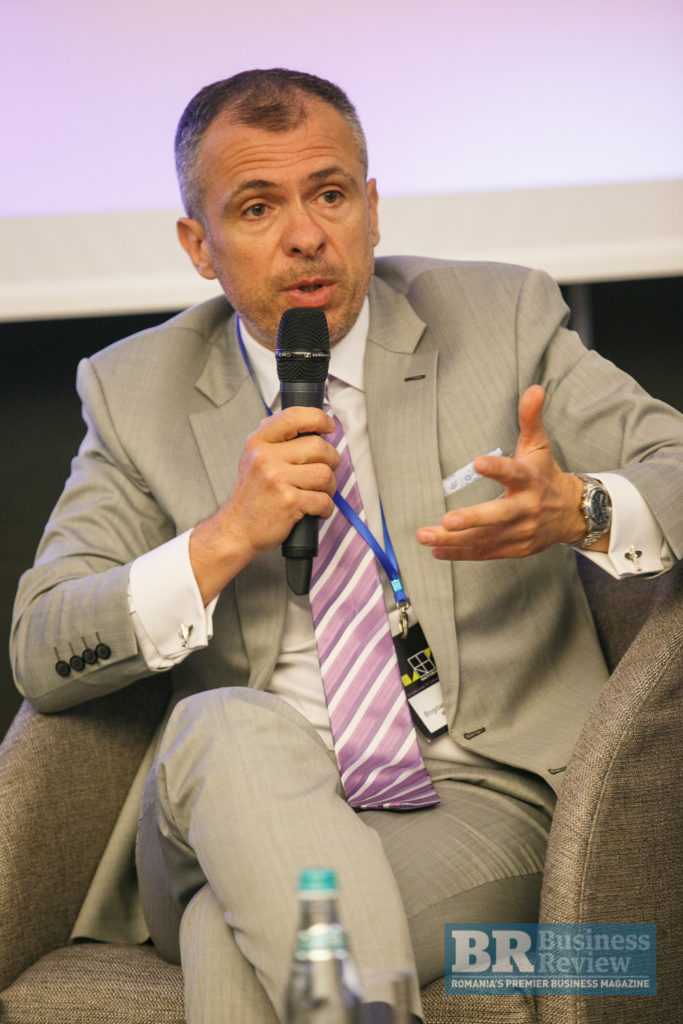 Creativity also has an operational dimension – we’re going more and more towards apps and technologies made by specialists to what we call citizen development – creating new processes without using a specific programming language
Creativity also has an operational dimension – we’re going more and more towards apps and technologies made by specialists to what we call citizen development – creating new processes without using a specific programming language- People are starting to simplify the ways they interact and solve problems, with a significant impact on their personal time – the way it happened in the US in the 50s with new home appliances that freed up a lot of time for people.
- Our time can now be used less for work and more for various other activities
- Teamwork – being able to interact with so many teams without necessarily even going to the office and without the need to move to another city.
- Simplicity – things need to be simple and this includes citizen developers
- Security of the tools we use – the way our technology is built today can determine with a 0 error rate the identity of the person accessing the tool – there’s no longer a barrier for working from home in terms of not knowing what the employee really does, because tech allows us to know how he’s using the programmes.
- Balance between work & home life – millennial want to be able to choose how much, when, where and how they work and have more flexibility
- We want to know the same thing that a real estate developer wants to know about clients, tenants etc.
Panel 3 – Bucharest vs. secondary cities: the new battleground on the Romanian real estate market

Florian Nitu, Managing Partner, Popovici Nitu Stoica & Asociatii
- Our firm is one of the experts in real estate law in all its components, from land acquisition and development to operation, investments, industrial, residential, commercial
- I’ve noticed a generational change in the real estate market, including in terms of developers – major players are products of the Romanian real estate markets and besides the new generation another phenomenon has occurred – developers are more responsible and they engage in a dialogue for urban regeneration with authorities in the various stages of the project.
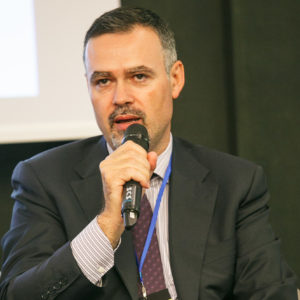
- A real estate project also has to contribute to the good of the community and generate a public contribution
- Another very important element that accelerates development is the preventive engagement with neighbors and the local community which the project targets
- Contact with community representatives needs to take place from the beginning of the project and be maintained throughout.
- Legally, the compliance level has increased for construction permits and I don’t think this will change from now on. So old buildings will no longer be compliant to these higher standards, meaning they will probably be torn down rather than reconverted.
Antoniu Panait, Managing Director, Vastint
- Currently we have two major projects in construction at Timpuri Noi, and a land in District 1 of Bucharest which we intend to develop in the next period
- Big cities will continue to develop at the same rates and in the same direction – and they will continue to attract people. Bucharest and Ilfov county are no longer separated.
- In this so-called urban jungle, there is a need for micro-climates that can offer office, residential, commercial spaces – and that’s how we started our project in Timpuri Noi, trying to find solutions and develop very big projects.
- The first two office buildings are 100 percent occupied
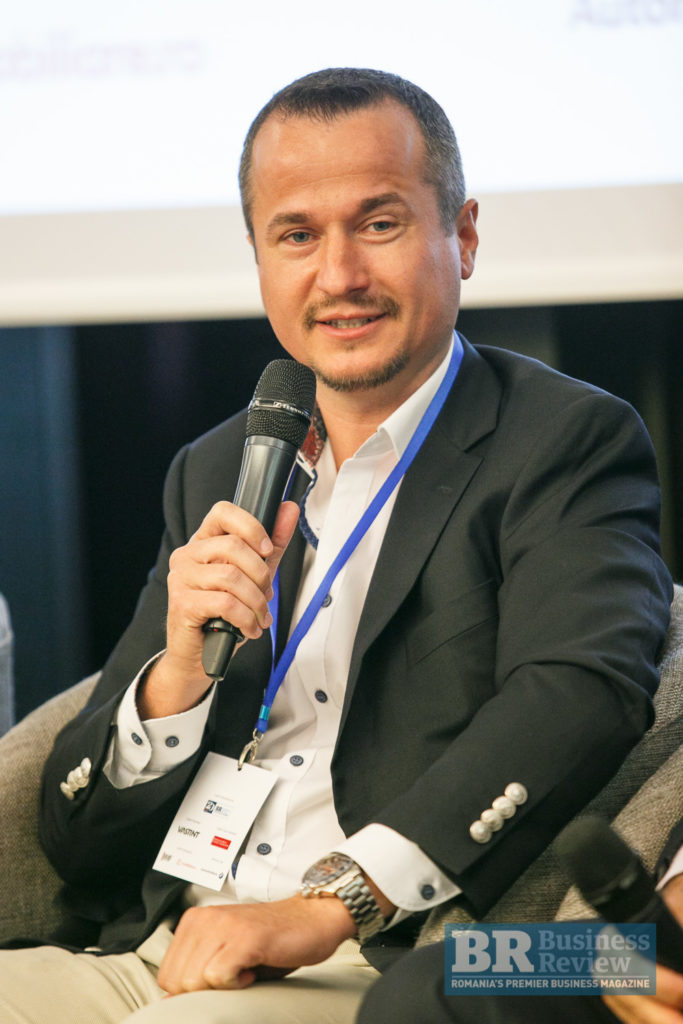 People in big cities need these types of projects because it gives them time to focus on family and other activities – when you spend two-three hours in traffic every day you’re less productive, more stressed – and at the same time employers lose money. If employees are already tired when they get to the office, they lose productivity.
People in big cities need these types of projects because it gives them time to focus on family and other activities – when you spend two-three hours in traffic every day you’re less productive, more stressed – and at the same time employers lose money. If employees are already tired when they get to the office, they lose productivity.- The best employees are the first ones to leave a company if they find a better place to work which allows them to have more free time to spend with their family and friends.
- Orhideea is the only area in Romania with as high a rate of development – it’s close to the main train station and other transport links and to the residential neighborhoods.
- Unfortunately, some old buildings have been converted from residential to offices and there’s nothing more you can do with it, except maybe turn it back to residential
- Would you reconvert an old building in a secondary city? Certainly, at the right moment, we would. But for some old buildings, it’s not worth it yet, but in a few years new buildings will take the price of older ones down so much that they will be cheap to buy and to reconvert.
- There are many projects towards the exit to Pitesti, towards Oltenitei, projects developed fast, with doubtful quality, and the apartments were purchased.
- In the market, many people have understood what it means to turn towards quality.
- In London we have a development of over 10 ha; A local British firm was hired for construction and a large share of employees are Romanians – from engineers to laborers. We are already starting to see engineers return as the pay on the local market has started to grow.
Sebastian Dragomir, Director | Office Advisory, Colliers International Romania
- On why Bucharest doesn’t have a sense of community: First of all, the question of Bucharest v. secondary cities should be raised differently and turned into Bucharest together with these cities.
- Poland’s approach was to develop its secondary cities a lot – we are headed towards these models and regional cities have become magnets for the population – it’s good because companies can develop centers in all these cities and everyone benefits from this.

- We try to compensate for the lack of transport infrastructure in Romania, with a very good IT infrastructure
- Bucharest has developed and tried to absorb as much as possible from the national resource, but things have started to change and this is a positive thing
- Let’s not just forget about 10-year old buildings and think about them as obsolete – let’s try to bring them into the present and continue to use them – owners of older buildings can still create communities
- Work-life balance is seen as a bit old in Western countries – now it’s all about work-life integration
- From a business perspective, most large companies that came recently in Romania or expanded aggressively – leasing over 7,000 sqm – 10,000 sqm or 50,000 sqm are confident about the economic outlook of Romania.
- The digitalization in real estate means what the digital photograph was for Kodak. Now we are talking about co-working, co-living, Uber, Airbnb.
Didier Balcaen, General Manager, Speedwell Real Estate Development
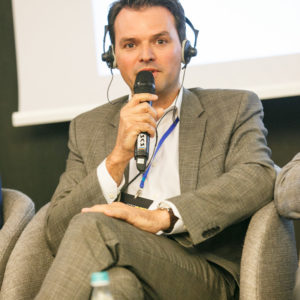 Ambitious plans for Cluj – a mixed project – transit-oriented development – regeneration of an area that includes a former factory and will aim to create a community.
Ambitious plans for Cluj – a mixed project – transit-oriented development – regeneration of an area that includes a former factory and will aim to create a community.- Why we went to Cluj: It’s part of our company strategy to go towards inner-city mixed developments – we want to be in the heart of the city, close to everything – we stumbled upon that location in Cluj, it was more of a coincidence than something more special.
- Who we hope to attract: We are targeting end-users – people who live there. We want people who will be working in these offices and also want to live there, they don’t want to spend time in traffic.
- Defining old buildings: from 200 years old, which is very valuable for us and we have no hesitation to integrate it – but a 30-40 year old building would probably be torn down – so we shouldn’t generalize about “old buildings”.
Ion Sturza, President, Fribourg Capital
- Our project in Cluj, in full economic crisis, was not a classic real estate project – real estate is just a part. Technology companies are much more aware of details. We’ve built an ecosystem for the IT & C community which managed to save Cluj when everything was stagnating economically in 2009-10
- To talk about secondary cities’ perspective we need it to have a critical mass of 500,000+ inhabitants. There are no such cities in Romania, most are under 200,000 people, so critical mass is not achieved. The second criteria is a critical mass of students/academia/higher education of 100,000+ – there is Cluj and Iasi. Third, we need a modern mentality for the city’s administrators in order to create a brand for that city – I asked Iasi representatives about their brand and they didn’t know what to answer. Cluj, however, is Transylvania’s digital heart.
- Employees want a mall at the ground floor – 100 percent of the companies at Cluj Liberty were new entries – no company already in Cluj wanted to move.
- We create illusions that employees want all these facilities – they want some comfort, but not as much as we think. Later, perhaps, they start wanting more, but not initially.
- I would take a 3-4 year break from investments and developments now, because a new crisis is coming but we don’t see it yet. If anyone wants to invest now they need to have a long-term vision and be prepared for a market correction starting as soon as later this year.
- Only a 5 percent drop in prices or consumption will lead to a crisis in the real estate sector.
Beatrice Dumitrascu, VP Residential Sales, One United Properties

- On how they create a community but try not to keep people captive in one mixed project – One Floreasca Properties is our first mixed project but people won’t be captive unless they want to – they will be able to work, live, shop in the area, but it’s also very close to other developed areas of the cities, it has the necessary infrastructure.
- Off-plan sales work for us. (…) There is liquidity in the market.
Dorel Nita, Head of Real Estate Analysis Division, imobiliare.ro
- Orhideea has developed a lot in terms of office buildings and there are almost 30,000 people working there and there will be more
- However there are not enough residential projects in the area and we’re currently talking with developers who are interested in developing there, mainly targeting new employees in the Orhideea area.
 Timpuri Noi also offers residential properties and mixed projects are a natural reaction to the capital’s incapacity to offer better mobility.
Timpuri Noi also offers residential properties and mixed projects are a natural reaction to the capital’s incapacity to offer better mobility.- It’s difficult to develop mixed projects and they take a very long time, but at the same time the labour market is very dynamic
- I would advise developers to accelerate residential projects near office spaces because there are no quality infrastructure investments in Bucharest so they need to compensate
- We have reached an annual growth rate of 4-5 percent – demand is starting to show signs of weakness; At least, in Moldova, Muntenia, there is more pessimism in the market than in cities in Western Romania where people continue to purchase properties.
- There are all the ingredients for a moderate growth, the demand is there and the amount of delivered housing remains small.
Gabriel Tomescu, CEO, BMF Group
- On what we should do inside buildings in order for them to benefit the community: how can we retain employees and make them happy

- Facility management isn’t just about basic maintenance – it needs to improve quality of life – from cleanliness to childcare, air quality, parking, proximity to home.
- Technology and education
- Technology-wise it’s not just about things like smart offices or green energy – I’m talking about social technology – we need our phones at all times because we need to communicate all the time – so tech solutions can be related to ordering coffee or food, parking at the office, booking a meeting room, etc.
Panel 4 – Industrial & Logistics – Moderated by Andreea Paun, Managing Partner, Griffes
Marian Orzu, Managing Partner, Dunwell
- The industrial market is not as visible as other real estate sectors like office, residential, retail
- Industrial is in the background, it’s not as flashy, but it’s one of the most important segments
- The industrial sector is a very good indicator of the economy
- Last year, around 600,000 sqm of industrial space was sold – but most of it was for consumption, not for production
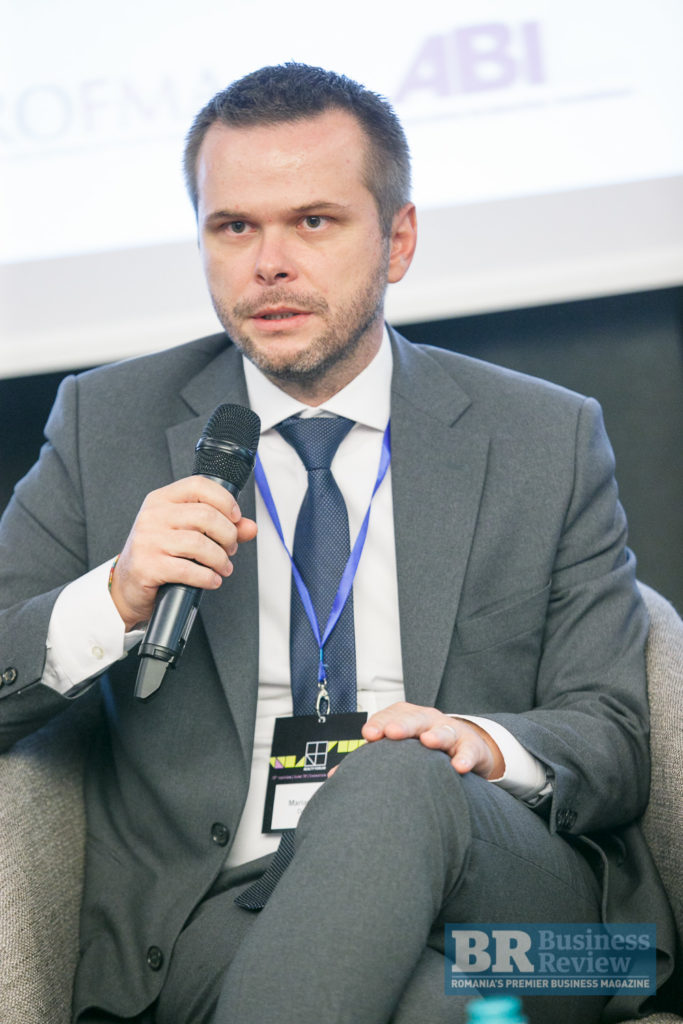
- Customers in the industrial sector can be split into three main types: producers, distributors and retailers – the last two are consumption-driven, while production has more value added
- Ideally, you should have a mix but I’d be happier with more production because logistics and retail follow – healthy mix 70 percent production and 30 percent consumption
- Brasov is a very interesting mix of industries – automotive, R&D, aerospace – so it continuously attracts new companies also thanks to its location in the center of Romania
- Constanta: as any port city, it is oriented towards trade and tourism. From my experience with companies that wanted to go to Constanta, they had difficulty finding labour. However there are some developers present and they are building, but less for production and more from retail and distribution.
Ivan Lokere, President and CEO, Alinso Group
- Why we strive for diversity: we want an attractive industrial park and bring people with various backgrounds to create a more dynamic atmosphere
- We need more entrepreneurship in Romania and we’re working on creating hubs to help people find affordable ways of creating their own companies
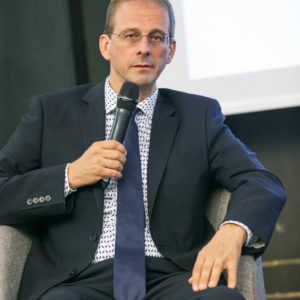 Constanta: a perception problem – nobody recommended it to us but we are very keen to develop in port cities. Investors may not want to be the first ones to go there, but someone should take the initiative
Constanta: a perception problem – nobody recommended it to us but we are very keen to develop in port cities. Investors may not want to be the first ones to go there, but someone should take the initiative- For the future: on the industrial side, I want to have smaller business parks to give investors space for smaller, younger, innovative companies
- Romania has a big potential for growth and it should capitalize on it and promote itself soon, because there may be competition from other countries in the near future.
- What an investor should not do on this market: buying too much land for one project and not having enough diversification
Panel 5 – Office of the Future – Moderated by Deputy Editor-in-Chief of Business Review, Anda Sebesi

Dorin Stefan, Architect and Owner, DSBA
- How important is quality architecture in the formation of a community in the office, knowing that employee turnover is very high in many industries and young people have different expectations from the workplace – we see quality of space from very different points of view. First of all, it’s a cultural perception and there are very big differences between corporate and architectural cultures.
- As an architect, I would have very different expectations than a corporate manager and I don’t think our visions can be brought together
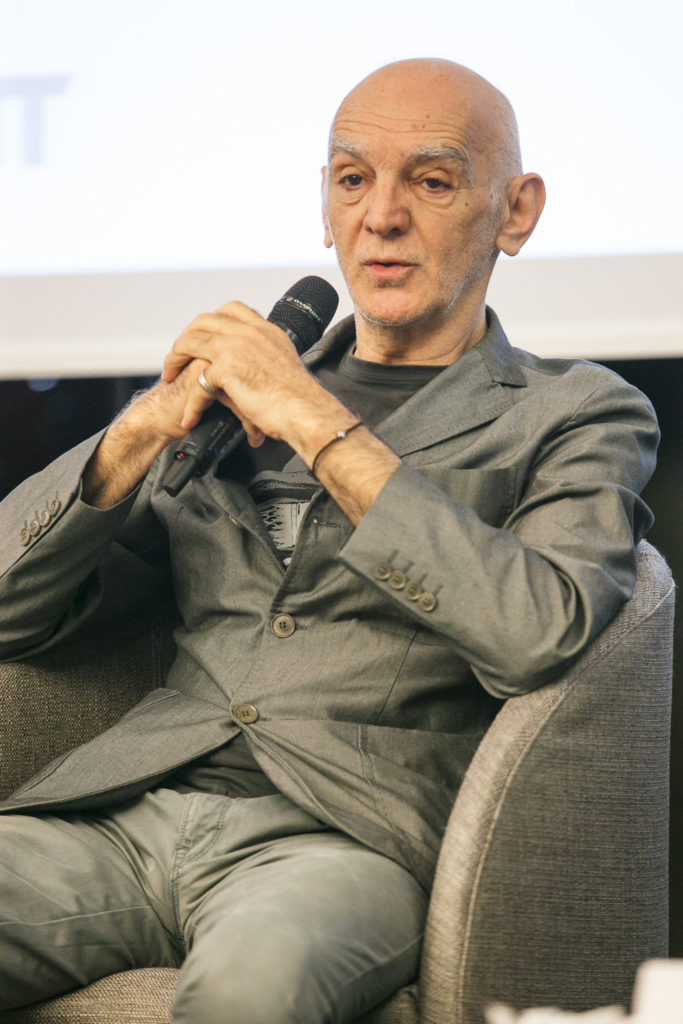
- In Bucharest, if we could integrate office towers in the historical background, it would be great – administration and decision-makers shouldn’t be so conservative – civil and professional society in Bucharest has always been conservative
- The collaboration between mayor and chief architect doesn’t really work in Bucharest
- We will not have too soon an infrastructure to accommodate the development in certain areas. The idea of hybrid building, relatively tall – with offices, retail and residential in a single entity.The adoption of hybrid concept could be done through towers.Bucharest should be a metropolis in the southeastern area of Europe. The critical mass of development will overcome infrastructure.He says that the developers have the capacity to adapt and move in another area of Bucharest if for instance there are limitations in terms of infrastructure.
- Stefan said that the offices will have to be spread more across the city to cater for the future workforce
Diana Calfa, Managng Partner, Morphoza
- How to respond to the need of the five generations of workforce currently on the labour market: We first need to listen and understand. It also depends on the industry, as some offices are linked to production – when you
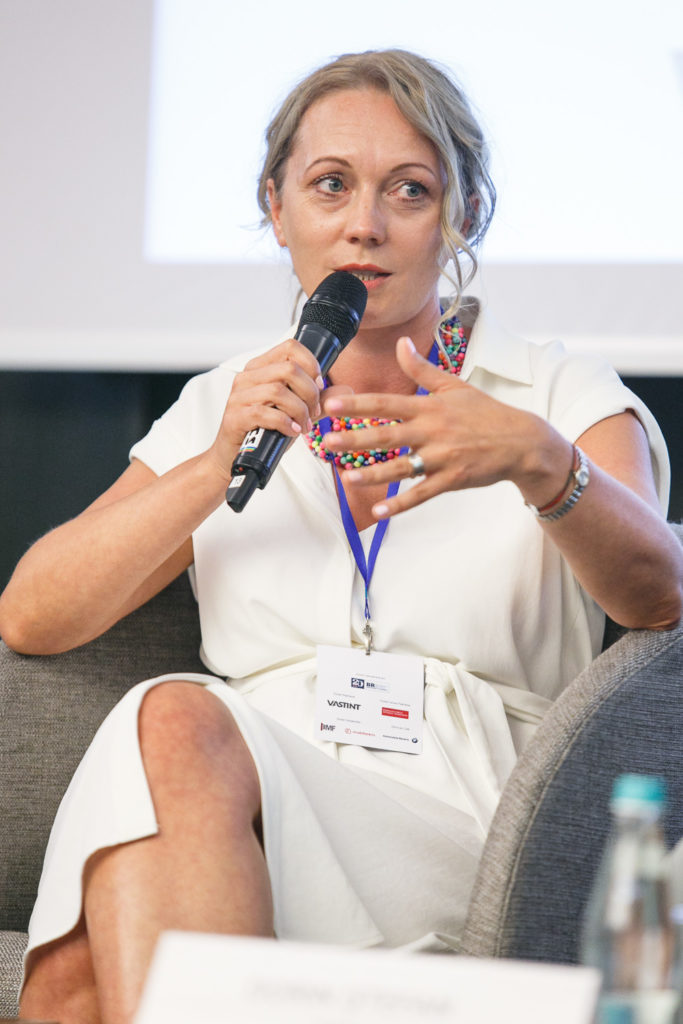 have millennial in the offices with friendly, colourful offices – what are workers in the production area going to say? They will think their colleagues in the offices don’t really do any work.
have millennial in the offices with friendly, colourful offices – what are workers in the production area going to say? They will think their colleagues in the offices don’t really do any work. - Many search for buildings in development in early stage so they can personalize the layout. (…) None of us know how we will work in the next five years.
- Many search for buildings in development in early stage so they can personalize the layout. (…) None of us know how we will work in the next five years.The design of offices is focused on flexibility, dynamism. Companies want to maximize the existing space and one of the solutions for these needs is shared-desk or flexi desk.
Sebastian Dragomir, Director | Office Advisory, Colliers International Romania
- How to respond to the need of the five generations of workforce currently on the labour market: Indeed, listening is very important and we at Colliers have workplace solutions – arranging offices so that employees feel more connected and encourage collaboration – this is the starting point for the office of the future
- At present, because of the limiting infrastructure and the desire of companies to attract staff, developers have given up building in already known centers and started building close to large residential areas.
- The flexibility will turn us into small teams working for big companies. This will take us to a problem of organization leadership. In order to have teams that have freedom to work from everywhere, there needs to be a trust of leadership.
- The employee of the future will be accustomed to more freedom.


:quality(80)/business-review.eu/wp-content/uploads/2018/06/bucharest-vs-secondary-cities-panel.jpg)
:quality(80)/business-review.eu/wp-content/uploads/2018/06/realty-forum-room.jpg)
:quality(80)/business-review.eu/wp-content/uploads/2018/06/realty-forum.jpg)
:quality(80)/business-review.eu/wp-content/uploads/2018/06/migration-panel-realty.jpg)
:quality(80)/business-review.eu/wp-content/uploads/2018/06/offices-of-the-future-panel.jpg)

:quality(80)/business-review.eu/wp-content/uploads/2024/04/Logo-Build21.jpeg)




:quality(80)/business-review.eu/wp-content/uploads/2024/02/IMG_6951.jpg)

:quality(80)/business-review.eu/wp-content/uploads/2024/04/COVER-1.jpg)



:quality(50)/business-review.eu/wp-content/uploads/2024/03/globalworth-women.jpg)
:quality(50)/business-review.eu/wp-content/uploads/2021/07/Gabriel-Blanita_Colliers.jpg)
:quality(50)/business-review.eu/wp-content/uploads/2024/01/Top-10_Colliers.jpg)
:quality(80)/business-review.eu/wp-content/uploads/2024/04/cover-april.jpg)
:quality(50)/business-review.eu/wp-content/uploads/2024/04/FOT_9989-7-scaled.jpg)
:quality(50)/business-review.eu/wp-content/uploads/2023/08/One-Floreasca-City-2-scaled.jpg)
:quality(50)/business-review.eu/wp-content/uploads/2024/04/ROMTEXTIL-2.jpg)